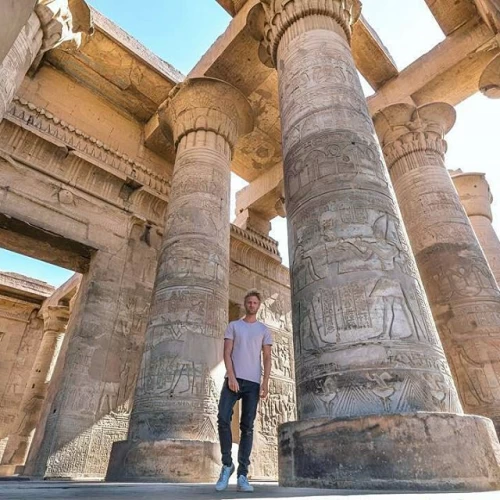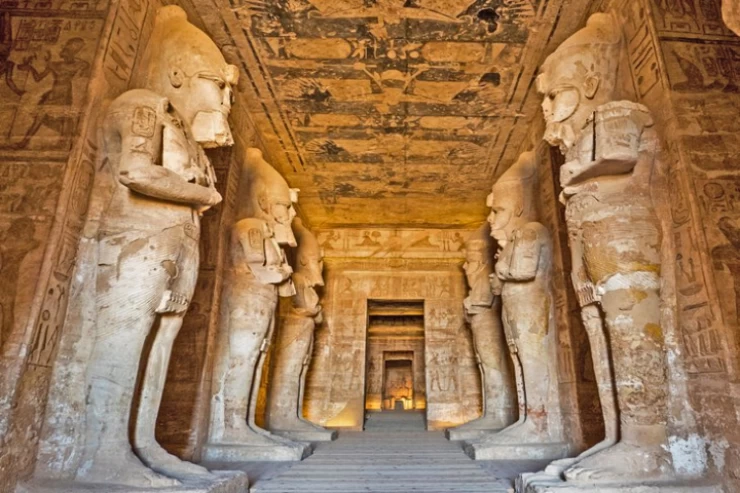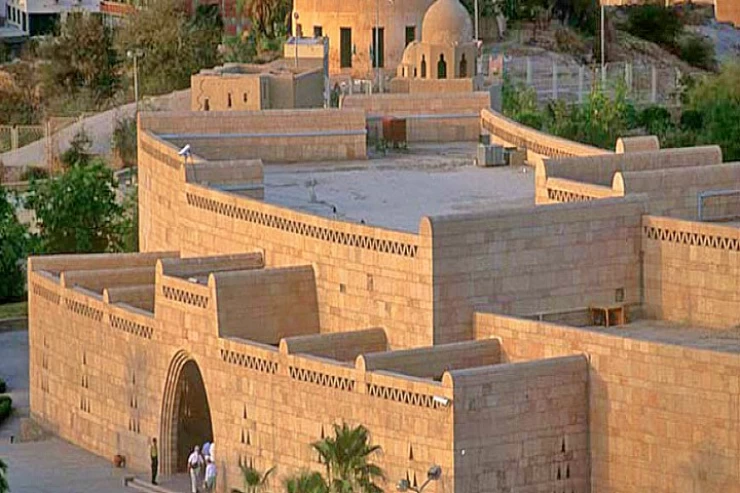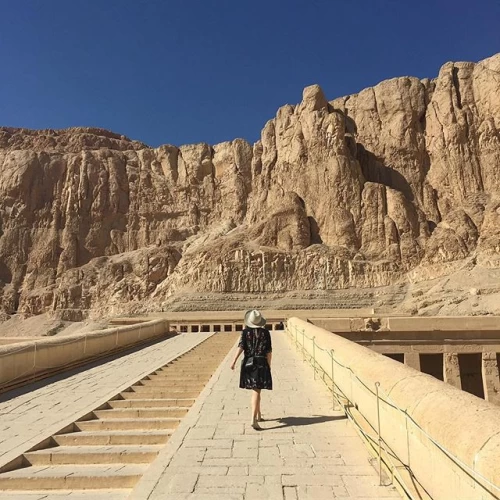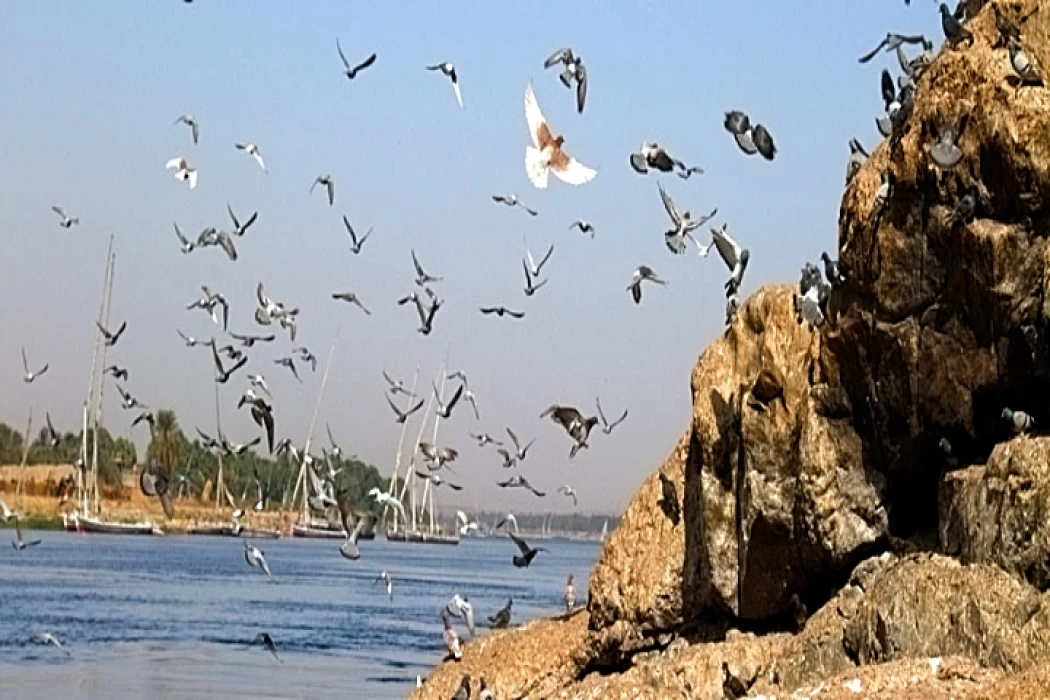
Tourism in Aswan
Aswan Tourism
Aswan is one of the most beautiful tourist cities in Egypt, well-known for its delightful location along the banks of the Nile River and a lovely nature that mixes authenticity with ancient history.
Aswan is the perfect place for enthusiasts of serenity and nature; it is also home to several monument-rich sites that draw visitors from every part of the world.
It is considered one of the most important cities of southern Egypt and the southern gateway to Egypt throughout history. The ancient Egyptians called it "Soun," meaning "market," for this city was the link between Egypt and Africa and a necessary stop for all trade caravans coming from Nubia via the Nile. Aswan boasts many archaeological sites and historical landmarks, such as Elephantine Island and ancient granite quarries, including the missing obelisk. Also located within Aswan are the Nubia Museum and Coptic Monastery of St. Simeon.
A short distance north, you'll find the temples of Edfu and Kom Ombo. If you change your direction to the south, it will take you to the temples of Philae on the island of Egilika.
Top places to visit in Aswan
Philae Temple features prominently among Aswan's monuments. It is situated on Philae Island, marked in history as being transferred to this site after the construction of the High Dam. This temple showcases some of the finest Pharaonic carving and is exclusively devoted to the cult of Isis.
One of the most remarkable engineering works of the twentieth century is the High Dam. The construction serves an important purpose: it controls flooding in the Nile and provides electricity for Egypt. Tourists visit the dam to see it and learn about its significance in history and economics.
Abu Simbel Temple is one of the greatest Pharaonic temples built by King Ramses II and is famous for its huge rock-carved statues. According to the temple's specifications, this phenomenon of the sun shining perpendicularly onto the Holy of Holies occurs twice during the year, which is one of the unique astronomical events.
According to some sources, this phenomenon can be seen on the birthday of King Ramses II once and a second time on the date of his throne ascension. Botanical Island is one of the most beautiful natural gardens of Aswan, which houses a variety of rare plants from many regions across the globe. Visitors can stroll around the island, enjoying the beauty of nature.
This museum is among the most crucial museums all over by showcasing Nubia's history and cultural aspects, as it houses antiques and statues as well as manuscripts showcasing the ancient Nubian civilization.
Aswan tourist market places are the best places to visit in Aswan, as they sell Nubian handicrafts such as embroidered clothes, spices, and Pharaonic antiquities.
Elephantine Island is situated in the Nile River and is represented by lots of ancient temples and tombs that date back to the time of the Pharaos. It is also widely known for its most distinguished setting, affording serene views of the river.
The Nubian village excursions are among the most captivating sites for tourists. Visitors can study the ancient Nubian lifestyle, take a stroll through brightly painted homes, and enjoy folk performances.
A unique historical edifice is the Aga Khan mausoleum, and one gets this as an exceptional architectural landmark in Aswan as it has a wonderful Islamic design and beautiful vistas of the Nile. Tourists can view the mausoleum from the outside and then move toward a panoramic view of the city.
It is one of the largest manmade lakes in the whole world and is a unique opportunity for those people who enjoy nature and recreation in fishing. So, guests are allowed to take boat tours, sit in on crocodile sightings, or enjoy a variety of wildlife.
After all, Aswan is a city of beauty and history, offering a unique tourist adventure that combines ancient Pharaonic monuments and enchanting nature.
Whether you're looking to relax by the Nile, explore ancient temples, or learn about Nubian culture, Aswan offers everything you need for an unforgettable tour.
Aswan is the land of gold, the land of good people. On its land, there are many different civilizations and cultures, and its warm, stable weather is unparalleled in the winter. With all these elements and others, Aswan has become a tourist destination that attracts the attention of the world.
Enjoy a wonderful vacation in the far south of Egypt, where these places vary between cultural, historical, and recreational.
Aswan is one of the beautiful and peaceful destinations in Egypt and lies farthest in the south of the country on the River Nile. With dramatic scenic beauty, ancient history, and an actively living Nubian culture, it is the kind of retreat no traveler ever forgets.
History
Pharaonic Egypt
The importance of this region emerged during the Old Kingdom, securing the southern border. It served as a center for armies when the kings of the Middle Kingdom attempted to extend their power southward. It was particularly important in the Egyptian war to drive out the Hyksos.
Ptolemaic Egypt
During the Ptolemaic era, the island of Philae—the seat of worship of the goddess Isis—received much attention, and they completed its great temple.
Roman Egypt
During the Roman era, temples were built in the ancient Egyptian style to attract the Egyptians. Emperor Trajan built a small temple on Philae Island.
With the spread of Christianity, it became the official religion in the fifth century AD, and Egyptian temples were transformed into churches.
The Islamic Era
Islam then spread from its inception; evidence written in Kufic script dating back to the early first century AH has been found.
Aswan flourished during the Islamic era, becoming a route to Azab on the Red Sea coast in the 10th century AD, from where ships sailed to the Hijaz, Yemen, and India.
During the sixth and seventh centuries AH, it was a significant cultural hub with three schools, the oldest of which were the Aswan School, Saifiya School, and Najmiya School in Aswan.
Modern Era
Muhammad Ali established the first military school in Egypt there in 1837.
Aswan is a gateway to the most famous historical sites of Egypt. Among its prime sites is the Philae Temple, which honored goddess Isis. The temple rests on an island with the Nile in the background. However, the historical value of the temple pales in front of its scenic beauty. The glory of the temple and its legends are rekindled during the Sound and Light Show at nightfall.
The Unfinished Obelisk, another interesting site, gives credit to the awe-inspiring stone craftsmanship of the ancient Egyptians. To the north lies the Temple of Kom Ombo, a unique temple dedicated to the two gods, Sobek and Horus. Abu Simbel's stunning temples are a must-have for any visit to Aswan. These colossal monuments carved right into the mountains speak for the architectural genius of Ramesses II and stand as a testament to his reign.
In the charming south, the river differs in form and subject from its nature in any other governorate in terms of purity and color, which, along with the color of the sky, form an artistic painting created by the Creator. Therefore, the Nile in the south forces you to visit it more than once.
The Nile takes on a peaceful beauty in Aswan. A ride on a felucca on its calm waters is one of the most suitable means of taking in the natural beauty of the location, especially when the sun sets into the riverbanks.
There are contemporary marvels that add to Aswan's beauty. The Aswan High Dam is an engineering marvel that not only controls the Nile waters but also created Lake Nasser, one of the world's largest artificial lakes. You can visit lesser-known gems from here like the Kalabsha Temple, hidden by the lake shores.
In Nubia, you'll find all the comforts, tranquility, and clear weather, making it an unparalleled eco-tourism destination in the far south of Egypt. As you set foot in Nubia and its villages, you'll find Nubian houses designed in the shape of domes, in cheerful colors, overlooking the Nile... You'll find women wearing the traditional Nubian gergar, and the markets are filled with handcrafted products and eco-friendly items, just as their fathers and grandfathers did.
Some of the murals tell the story of the amazing generosity and hospitality of the Nubian people, and their refined treatment of foreigners visiting their country. Enjoy the picturesque environment in the villages overlooking the Nile River, and spend a pleasant time surrounded by pure and attractive nature, generous hospitality, and the preparation of distinctive drinks and foods unique to the Nubian people, inherited from their fathers and grandfathers.
Aswan is Nubia's cultural capital, a city that is steeped in history and tradition. You should go to a Nubian village, where you can feel the hospitality of the people, the colorfulness of their houses, and their rich heritage. Taste traditional Nubian food, hear their distinct music, and see handmade handicrafts that narrate their history. It's something that stays with you.
One of Aswan's oldest marketplaces, the old tourist market is becoming more well-known and respected over time.
It's the biggest, busiest, and most dynamic commercial market. Aswan is full of tourist and natural attractions and tourist attractions, most notably the Tourist Market Street, which includes a large number of bazaars and markets specialized in selling gifts and souvenirs that carry the traditional style of the people of Aswan, in addition to handmade products such as accessories, porcelain, and clothes, as well as leather products and antiques, and selling local products such as clothes, handicrafts, ceramic utensils, gifts and souvenirs. There are also a lot of eateries on Aswan's Tourist Market Street. This is on top of leather goods, textiles, and fragrance items.
Aswan Market is a vibrant destination where the scent of spices fills the air and the eyes are treated to local handicrafts. Explore the souk to find treasures like handcrafted jewelry, colorful Nubian fabrics, and scented hibiscus tea—a local favorite and wonderful souvenir.







